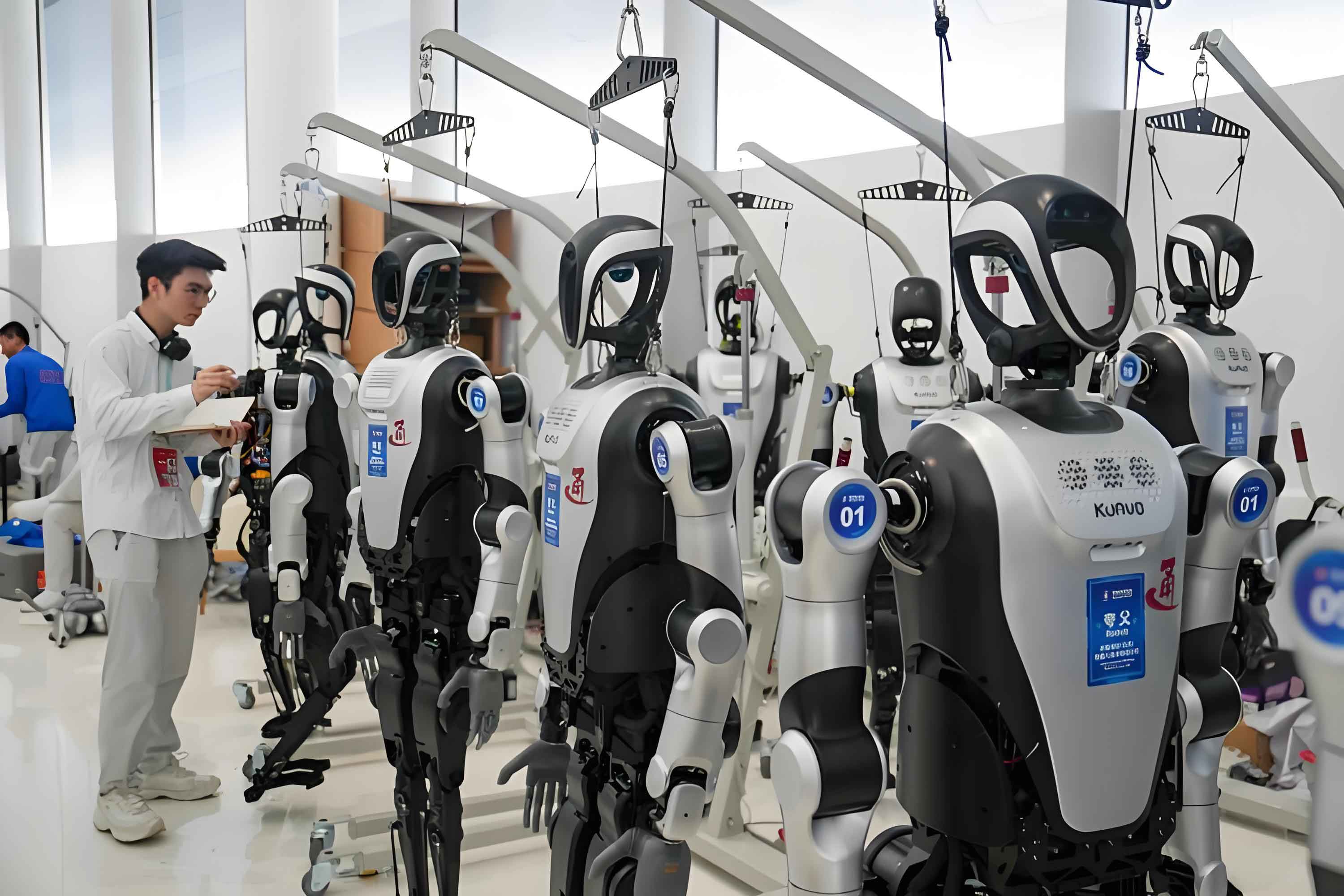As a researcher deeply immersed in the field of robotics, I have witnessed firsthand the rapid advancements in humanoid robot technology. These machines, designed to mimic human appearance and behavior, are no longer confined to science fiction. From industrial applications to consumer markets, humanoid robots are steadily bridging the gap between experimental prototypes and real-world utility. This article explores the technological milestones, current breakthroughs, persistent challenges, and future trajectories of humanoid robots, emphasizing their potential to revolutionize industries and daily life.

Historical Context and Technological Progression
The journey of humanoid robots began in the mid-20th century with the invention of the first industrial robot, Unimate 001, by George Devol and Joseph Engelberger. This marked the dawn of programmable machines capable of repetitive tasks. By the 1970s, Japan’s WABOT-1 emerged as the first full-scale humanoid robot, integrating vision, tactile sensors, and basic conversational abilities. Since then, three distinct generations of robots have shaped the landscape:
- First Generation (1960s–1980s): Programmable robots for repetitive industrial tasks.
- Second Generation (1990s–2010s): Adaptive robots with limited environmental perception.
- Third Generation (2020s–Present): Intelligent humanoid robots with embodied AI (EAI), enabling learning, reasoning, and dynamic interaction.
Table 1: Evolution of Humanoid Robot Capabilities
| Generation | Key Features | Example Applications |
|---|---|---|
| 1st | Pre-programmed tasks | Assembly lines, welding |
| 2nd | Basic sensors, partial autonomy | Material handling, inspection |
| 3rd | AI integration, environmental adaption | Healthcare, service industries |
Current State of Humanoid Robot Development
Today, humanoid robots are being developed by leading companies and research institutions worldwide. In China, firms like Unitree Robotics and Fourier Intelligence have achieved remarkable milestones. For instance, Unitree’s H1 robot, showcased at the 2023 Spring Festival Gala, demonstrated unprecedented agility with a walking speed of 3.3 m/s and advanced cluster coordination for synchronized performances. Similarly, G1, released in 2024, features 23–43 joints and force-controlled dexterous hands capable of handling fragile objects like eggs or performing precise tasks such as welding.
Table 2: Leading Humanoid Robots (2023–2024)
| Model | Developer | Key Specifications | Applications |
|---|---|---|---|
| H1 | Unitree Robotics | 3.3 m/s speed, 360° perception, cluster control | Entertainment, logistics |
| G1 | Unitree Robotics | 120 N·m torque, dynamic motions | Manufacturing, domestic tasks |
| Optimus | Tesla | Object manipulation, mobility | Industrial automation |
| Atlas | Boston Dynamics | Hydraulic limbs, terrain adaptability | Search & rescue, exploration |
Globally, Boston Dynamics’ Atlas remains a benchmark for mobility, executing backflips and parkour maneuvers, while Tesla’s Optimus aims to transition from factory floors to household roles like cooking and eldercare.
Technical and Commercial Challenges
Despite progress, significant hurdles impede the mass adoption of humanoid robots:
- Embodied AI Limitations: Current systems struggle to replicate human-like situational awareness. For example, the H1 robot’s retreat after its 2023 stage performance required human assistance, highlighting gaps in autonomous decision-making.
- Cost Barriers: Production costs remain prohibitively high, with early models priced above 100,000.Economiesofscaleandmaterialinnovationsmustdrivepricesbelow100,000.Economiesofscaleandmaterialinnovationsmustdrivepricesbelow10,000 for consumer viability.
- Safety and Ethics: Incidents like the alleged 2024 Optimus injury incident underscore unresolved safety risks. Furthermore, ethical dilemmas—such as deploying humanoid robots in warfare—demand robust regulatory frameworks.
Table 3: Key Challenges for Humanoid Robot Adoption
| Challenge | Current Status | Target Threshold |
|---|---|---|
| Cost per unit | $100,000+ | <$10,000 |
| Autonomy level | Partial (requires human oversight) | Full situational awareness |
| Safety compliance | Under testing | Certified for public interaction |
Market Projections and Future Applications
Industry forecasts suggest that humanoid robots will enter factories between 2024 and 2027, followed by consumer markets in 2028–2031. By 2035, global production could reach 1.4 million units, generating $38 billion in revenue. Potential applications span:
- Healthcare: Assisting with patient care and rehabilitation.
- Education: Serving as interactive tutors for personalized learning.
- Domestic Use: Performing chores, gardening, and elder support.
Table 4: Projected Timeline for Humanoid Robot Adoption
| Sector | Adoption Phase | Estimated Timeline |
|---|---|---|
| Industrial | Early integration | 2024–2027 |
| Consumer | Mass-market entry | 2028–2031 |
| Specialized | Healthcare/education | 2032–2035 |
Conclusion
The era of humanoid robots is undeniably approaching, driven by breakthroughs in AI, materials science, and mechanical engineering. However, achieving seamless integration into daily life requires overcoming technical limitations, cost barriers, and societal apprehensions. As these machines evolve from factory tools to household companions, their impact will redefine industries, economies, and human-machine relationships. For now, researchers like myself remain cautiously optimistic, recognizing that every innovation brings us one step closer to a future where humanoid robots are as ubiquitous as smartphones.
